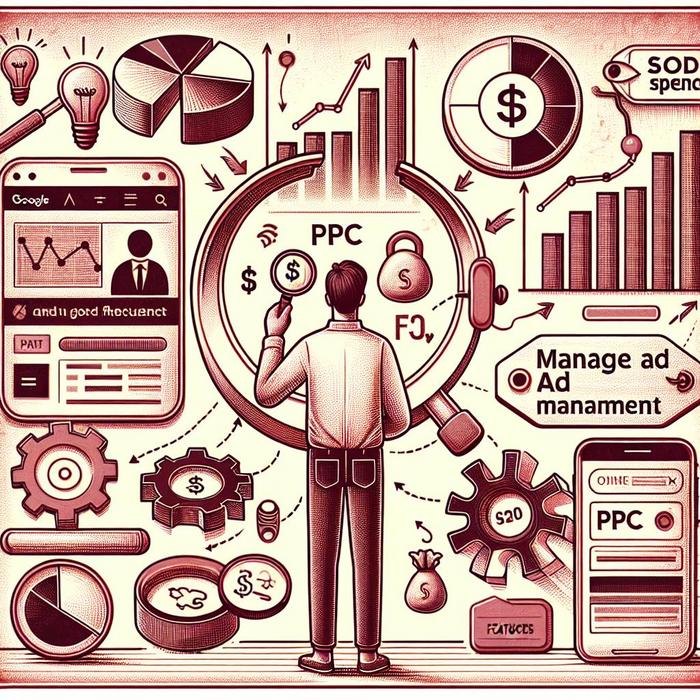Unlocking the Power of Strategic Budget Allocation
For high-level executives, acing the art of campaign budget allocation is paramount, especially in the era of multi-channel advertising. This skill not only enhances brand visibility but also drives growth. So how do we master strategic budget allocation in multi-channel ad campaigns? Let’s jump right in!
Unmasking the Essence of Strategic Budget Allocation
We live in a digital world, in which consumers interact with brands across numerous platforms. Failing to engage with these consumers on all of these platforms is a lost opportunity for growth. Therefore, a robust multi-channel approach should take center stage in any company’s marketing efforts.
More channels mean increased complexity in the allocation of ad budgets. In such a scenario, strategic budget allocation becomes the foundation of enhancing brand visibility and engagement. This involves allocating resources across various advertising platforms to maximize returns and drive growth seamlessly.
Achievement Multi-Channel Campaign Mastery
The growing importance of multi-channel advertising means that mastery of this art should be a top priority. To achieve this, high-level executives should:
1. Embrace platform diversification: It is crucial to venture onto multiple platforms, like Google, Meta, TikTok, etc., to reach more potential customers.
2. Understand platform dynamics: Each advertising platform poses unique advantages and challenges. Therefore, understanding the cost-effectiveness and performance of each platform can provide an edge in campaign strategy formulation. For instance, a detailed look at TikTok Ads vs Google Ads can reveal some insightful data.
3. Allocate budget wisely: Adequate budget allocation plays a critical role in the success of an advertising campaign across numerous platforms.
Integrating Technology for Sophisticated Budget Allocation
Today, technology has become the backbone of successful marketing campaigns. Various tools and platforms offer insightful data and analytics to drive strategic decision-making. They help to evaluate performance, monitor metrics, and eventually determine the success of a campaign.
For example, PPC campaign management tools can aid in assessing performance across platforms such as Meta and Google. This comparison can reveal which platform offers better ROI as highlighted in this comparison. By leveraging these innovative tech-tools, executives can make more informed decisions and ensure optimal budget allocation.
Real-World Insights: The Art of Media Mix Modeling
A great example of strategic budget allocation in action is the art of media mix modeling. This approach involves leveraging data from various channels to understand their impacts on sales and revenue. These insights can further guide the allocation of budget across the channels to maximize ROI.
Mastering this art can significantly enhance the performance of your multi-channel marketing strategies, driving business growth and maintaining a competitive edge in the market.
Striking the Perfect Balance
Mastering budget allocation is about striking the perfect balance. It’s drawing upon insights from data, understanding platform dynamics, and leveraging technology, all while keeping the business objective sharply in focus.
Remember, no one-size-fits-all when it comes to budget allocation. It’s a dynamic process, constantly tweaked based on performance metrics and changing market trends. But with careful planning, strategic execution, and consistent monitoring, achieving campaign mastery in the world of multi-channel advertising is within your grasp.
To learn more about evaluating PPC campaigns across platforms like TikTok and Meta, dive into this detailed analysis. It’s a must-read for anyone interested in mastering the art of strategic budget allocation in multi-channel ad campaigns.
Ready to take your campaign mastery to new heights? Take the leap and redefine your multi-channel strategy now. Remember, the journey to mastering budget allocation starts with the first step, and that step begins here.
Setting the Stage for Strategic Decision Making
In an ever-evolving digital landscape, informed strategic decision-making is the cornerstone for creating robust business strategies. Executives need to navigate an array of complex parameters to make insightful decisions that maximize business growth. In the world of advertising, this involves making the best choices about allocating resources to various channels for maximum returns.
A major part of this decision-making involves understanding the effectiveness of different advertising platforms and their potential in driving business objectives. For instance, platforms like TikTok and Meta have rapidly gained traction for their potential to engage and reach the largest user base globally. Understanding the dynamics of these platforms can significantly improve strategic decisions regarding budget allocation.
Post-Campaign Analysis: Unearthing Hidden Gems
Once a multi-channel campaign has been executed, it is crucial to thoroughly evaluate its performance. Post-campaign analysis provides valuable insight into how each channel has performed and contributed to overall success.
Analyzing campaign performance metrics such as click-through rates (CTRs), impressions, conversion rates, and cost per acquisition (CPA) can provide a wealth of information about the effectiveness of each platform used in your campaign.
For example, integrating Google’s latest tech for revamping PPC campaigns can provide accurate data for evaluating campaign performance. Such evaluations can uncover crucial insights that aid in enhancing future campaign strategies and optimizing budget allocation.
Tools and Techniques for Effective Allocation
In all this complexity, tools and techniques that aid in deciphering and making data actionable are invaluable. These can help identify the best mix of channels, optimize financial resources, and drive growth.
For instance, it’s no secret that cross-channel attribution has a significant role to play in successful budget allocation. By understanding the path a customer takes before converting, you can identify the best channels and touchpoints. Making the five key steps to mastering cross-channel attribution part of your strategy can hence prove to be a game-changer.
The Power of Marketing Attribution Models
Marketing attribution models serve as an engine behind the optimization of a campaign’s budget. These models provide a framework to distribute the credit for a conversion across multiple touchpoints in a customer’s path. Understanding the effectiveness of these models can provide nuanced insights into the allocation of budget across channels. For instance, mastering the six essential marketing attribution models can unlock deeper insights on the multi-channel journey.
Key Takeaways
To sum up, mastering strategic budget allocation in a multi-channel advertising environment involves a combination of skills, ranging from understanding different platforms to robust analysis of campaigns post-execution. Incorporating technology and leveraging key tools and techniques is critical. Informed decision-making, powered by the right marketing attribution model, can provide a significant advantage.
Most notably, such strategic budget allocation serves as a powerful lever to drive business growth and maintain a competitive edge in the marketplace. After all, effective allocation not only enhances brand visibility but also enables businesses to capture the full potential of a multi-channel advertising strategy.
Embark on this exciting path by leveraging the power of attribution and incrementality. Enhance your strategic decision-making prowess and realize the power of informed allocation. With the right approach and tools, navigating through the intricacies of multi-channel advertising becomes less daunting. Dive in, discern, and drive growth like never before!










Interesting post! Striking the right balance with strategic budget allocation sounds like a savvy move. Leveraging platform dynamics and tech-tools may offer some good insights on improving ad relevance and quality score across channels.
yes, effectively improving ad relevance and quality score could lead to higher click-through rates and better overall campaign performance.
considering factors like ad schedule and user intent also contributes significantly to campaign performance.